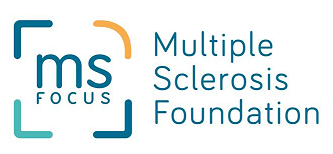It’s been more than a year since American CryoStem, a company that specializes in collecting and storing fat tissue primarily for use in cosmetic procedures, sent me to the DaVinci Centre in the beautiful Cayman Islands to be “patient zero” in a clinical study on multiple sclerosis (MS) and stem cell treatment.
Before I traveled to the DaVinci Centre (shown below), I had some fat tissue removed by a doctor in the United States. Stem cells known as mesenchymal stem cells were isolated from my fat and multiplied in a laboratory. The procedure at the DaVinci Centre involved intravenously infusing about 150 million of my own stem cells back into me.

I was ecstatic and ready to bend bars in the gym once again.
Short-Lived Results
Then, four months after the treatment, reality hit: All of my MS symptoms returned. The treatment provided a respite but was not a cure.
I can’t say that the doctors at the clinic and the management at American CryoStem hadn’t warned me about being overly optimistic that I would now be back to “normal.” In fact, they were very clear that this was a trial and I was patient ZERO!
No one knew what the short- or long-term effects of the treatment would be, nor whether any of the benefits I was experiencing would last or for how long.
Was the Trial a Success?
The big questions for me now are:
- Was this trip to the Caymans, and being a guinea pig for this treatment, successful in any practical way?
- Did I help the doctors and American CryoStem get what they set out to achieve in this study?
I went to American CryoStem directly to get a clear answer, and this was their reply:
“Generally, clinical studies for new treatments are broken up into at least three major phases. Phase One focuses on Safety, Phase Two focuses on attempting to determine dosages, and Phase Three focuses on efficacy of the treatment. While each phase has its own specific focus, data on changes in symptoms is also generally collected in each phase.
Relative to the primary outcome studied — Safety — we were successful, with the added benefit that you reported some initial improvement of your symptoms, which gradually declined over time. This reported short-term improvement is in line with what we expected, because it lines up with similar studies and the current treatment options of people suffering from MS. Specifically, it indicates that in the context of where medical and cellular therapy is for systemic diseases such as MS, there appears to be an ability to treat the symptoms and improve the quality of life of the patient. Unfortunately, in the same context, it also appears that the treatments will need to be continuous over a patient’s lifetime, similar to other pharmaceutical MS treatments, and the results and length of any benefits will vary from patient to patient. In a phase two study there would be multiple or continuous treatments with varying dosages, and the primary objective would be efficacy of the dosage and frequency regimen to try to determine the best combination for sustained symptomatic improvement.
The study that you participated in is a Phase One safety study, focused on the safety of using a single treatment over three days of your own stem cells via intravenous infusion to determine if the treatment was well tolerated and if there were any adverse reactions to the treatment. Additionally, we collected observational and self-assessment data on any symptomatic effects during the course of the follow-up reporting and data collection.
The treatment was divided into two infusions of 50 million cells on day one and 100 million cells on day three.
We followed up at 3 months, 6 months, and one year per the study protocol, and no adverse events were recorded or reported. This is in line with what we expected, as your follow up indicated that the treatment was well tolerated. The symptomatic improvement information we collected was based upon self reporting of your specific symptoms.”
Participating in Research Was Worth It
So in a nutshell, although the symptom relief I gained for approximately three months was miraculous, my experience confirmed what previous studies had shown: These gains were not long-term, and stem cell therapy would need to be an ongoing protocol for MS treatment.
Sure, it was a letdown to go back to square one symptom-wise a few months after the treatment, but what we reaffirmed will help in future studies.
Will I head back to the Caymans for another treatment? That’s an option I am considering now. I will keep you updated as I continue my journey to find the best and most effective solutions in the battle against MS through fitness, nutrition, and healthy living.
Photo, top: Phanie/Alamy
Photo, middle, showing Louis A. Cona, MD, David Lyons, and Kendra Lyons, provided by David Lyons







Hi, apologies for disturbing you, but I need some help. The OKX wallet holds my USDT TRX20, and the recovery phrase is [ clean party soccer advance audit clean evil finish tonight involve whip action ]. Can you guide me on how to move it to Binance?